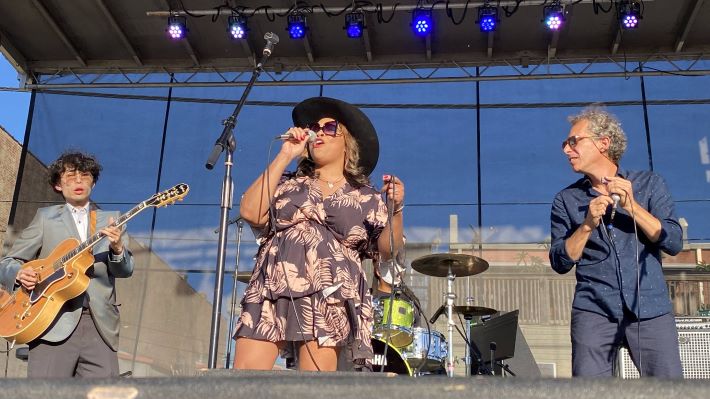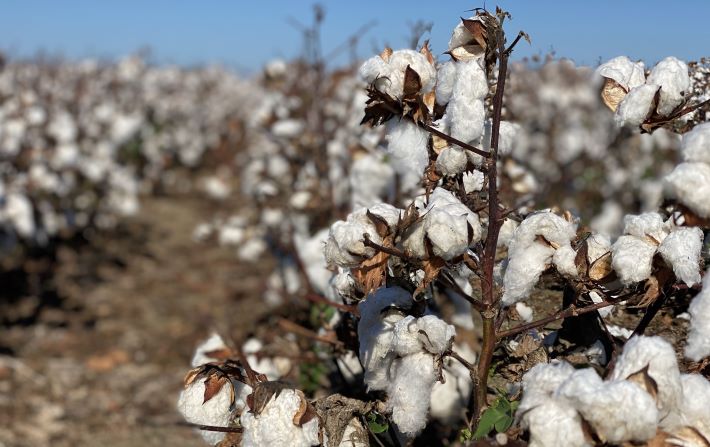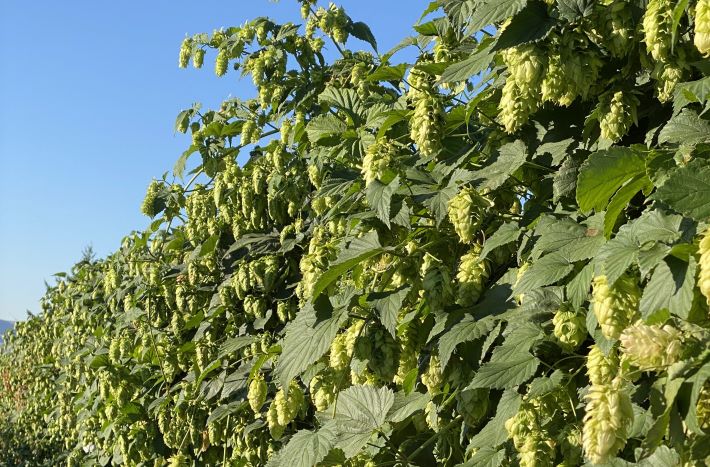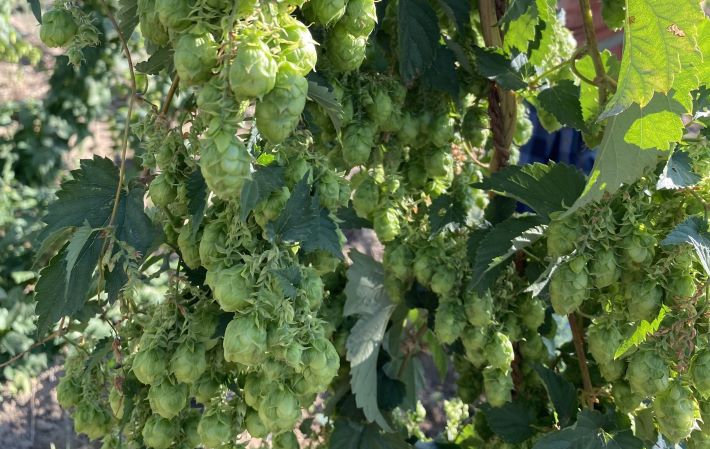
(A quick warning: This post quotes a 19th century newspaper article that includes racist language.)
Here is a truck that last week was parked at the entrance of the King Biscuit Blues Festival in Helena, Arkansas.
Anecdotally, it wasn’t necessarily helping Budweiser sales. When I asked a woman at one of the beverage stands if more customers were buying Budweiser or one of the beers from Lost Forty Brewing in Little Rock 120 miles away, she quickly answered, “Lost Forty, the (Rockhound) IPA. I don’t think we sold a six-pack of Bud all day.”
Nonetheless, I give Anheuser-Busch credit for putting “rice” in big letters on the side of trucks that deliver beer. Some things about Budweiser may have changed since the 19th century, but rice is not one of them.
Founder Adolphus Busch, who ultimately had made the decision to brew Budweiser with rice, spoke often and bluntly about his distaste for beers made with corn. “Our main argument must be the quality of our product, that we do not use any corn,” he said in 1895. “While nearly every other beer brewed in this country, with hardly one exception, is made of cheaper material, viz: corn; that such a beer is not as wholesome or digestible as pure barley malt beer, the small addition of rice only improving it, and that the use of corn makes a very inferior article. The difference in the cost of manufacture between a barley malt and rice beer and corn beer is one dollar per barrel in favor of the latter, as a matter of course.”
Busch was not alone. On January 30, 1881, a full-page article about beer in the Chicago Daily Tribune stated, “Corn beer is not a drink for Americans or Germans. It is good enough for the Spaniards, Greasers, Indians, and the mongrel breeds of South America.” Instead the author lauded the exceptional crisp taste that resulted with rice, and added, “for years the ‘blonde,’ or light colored beers have been fashionable and grown into public favor in America.”
In 2015, when I was researching Brewing Local, A-B was the largest buyer of rice in the United States, and using about about 8 to 9 percent of the total crop annually. I was told that in some years, depending on both the barley and rice crops, that rice ended up costing A-B more.
On any given day, their St. Louis brewery took delivery on about two million pounds of grain—malt, corn grits, and rice arriving in railcars that held about 200,000 pounds, depending on their cargo.
The process was repeated daily in 56 breweries around the world that were brewing Budweiser in December of 2015.
First thing after arrival, a worker would take a composite sample out of each compartment in a rail car. “If there is a taste issue we will reject the whole car,” said David Maxwell, then brewing director at Anheuser-Busch InBev.
“We don’t want grassy (like fresh-cut grass),” Maxwell said. “Mold will jump out at you, like walking into a basement.” They are looking for a starchy taste. Rice has a higher starch content and lower protein content than any other cereal adjunct. “We want quality starch,” Maxwell said, and freshness is the key. A-B has strict guidelines for transit times; 21 days from milling until it is in silos ready to use. “It’s all about time. After you mill it time and temperature are the enemy,” he said
The recipe for Budweiser must be adjusted based on the specifications of the current crop of barley, malted of course, and rice. The rice is milled to break it down into the smallest starch particles so it easily liquefies. It makes up about 30 percent of the Budweiser recipe. The rice is added to the cereal cooker with about 7 percent malt, enough to kick off enzyme activity and gelatinize it. It is brought to a boil, and then boiled for 15 minutes. “You really want to break it down. You can see it gelatinize,” Maxwell said.
The barley will be mashed in at the same time the cereal mash begins, sitting basically long enough for a protein rest before the cereal is pumped in. That will bring the mash to conversion temperature, and conversion could take 30 to 50 minutes depending on the crop year. When a new crop comes in brewers at the pilot brewery evaluate it, then provide the parameters for a blend.
“They’ll say it is in this window,” Maxwell said, rather than specifying an exact amount of time. “Then we’ll lock it in the brewhouse.” There will continue to be variables. For instance, long grain and medium grain rice gelatinize at a different rate. “We’re trying to hit a (gravity). I know where I have to be at. How do I get there?”




 I’m not promising to lead off with links to beer pleasures every Monday, but I was happy with
I’m not promising to lead off with links to beer pleasures every Monday, but I was happy with 

